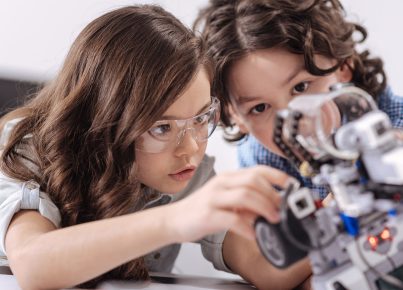In today’s era of misinformation and fake news, it has become more important than ever for educators and parents to instill critical thinking skills in their children. Gone are the days when one could blindly trust a piece of information on the internet or from a news source. To navigate this complex world, individuals must be equipped to question, analyze, and evaluate data with a discerning eye.
Here are some ideas for helping students develop critical thinking skills specifically designed to combat fake news.
1. Encourage questioning and curiosity: Critical thinking starts with asking questions. Teach students not to accept any information at face value but to inquire deeper by asking questions such as who, why, what, where, and when. By doing this, they will develop the habit of questioning the authenticity of any information they come across.
2. Fact-checking skills: Train students to verify facts using trustworthy sources before jumping into conclusions about news items. Introduce them to reliable fact-checking websites like Snopes, FactCheck.org, or PolitiFact so they learn to cross-reference claims and identify reliable sources of information.
3. Analyze source credibility: Teach them how to determine the credibility of a source by considering biases, expertise in the field, and accuracy or consistency in reporting. Students should understand the importance of viewing information sources with skepticism and recognize that even established media outlets have been known to make errors or fall for hoaxes.
4. Understand cognitive biases: Introduce students to their own cognitive biases and faulty reasoning processes that can lead people astray even when they think they’re being logical or rational. Examples include confirmation bias (favoring information that confirms one’s preexisting beliefs), groupthink (being influenced by others’ opinions), or anchoring (relying too heavily on the first piece of information encountered).
5. Teach digital literacy: Equip students with skills for navigating online spaces safely and responsibly. They should know how to differentiate between real news, fake news, and opinions. Educate them about digital footprints, which often impact their reputations or future prospects.
6. Foster empathy and perspective-taking: Being aware of one’s bias is crucial for critical thinking, and empathy helps in understanding viewpoints different from our own. Encourage students to put themselves in the shoes of others with differing opinions and experiences to develop informed perspectives.
7. Use real-life examples: Engage in discussing current events to apply critical thinking skills in real-world scenarios. This will help them grasp the relevance of these skills in their everyday lives.
8. Encourage healthy debate: Create a classroom culture that promotes respectful disagreement and debate. Students should feel comfortable sharing their ideas and challenging others’ perspectives.
With access to limitless information at our fingertips, critical thinking has become an indispensable tool for navigating the era of fake news. By fostering these skills early on, educators can empower the next generation with the ability to thoughtfully approach issues and make sound judgments based on facts.




